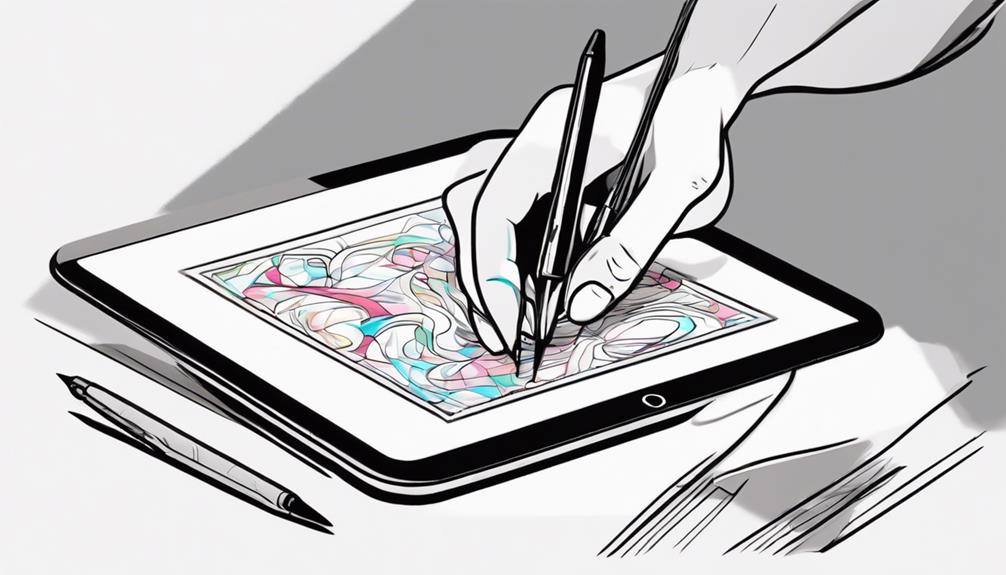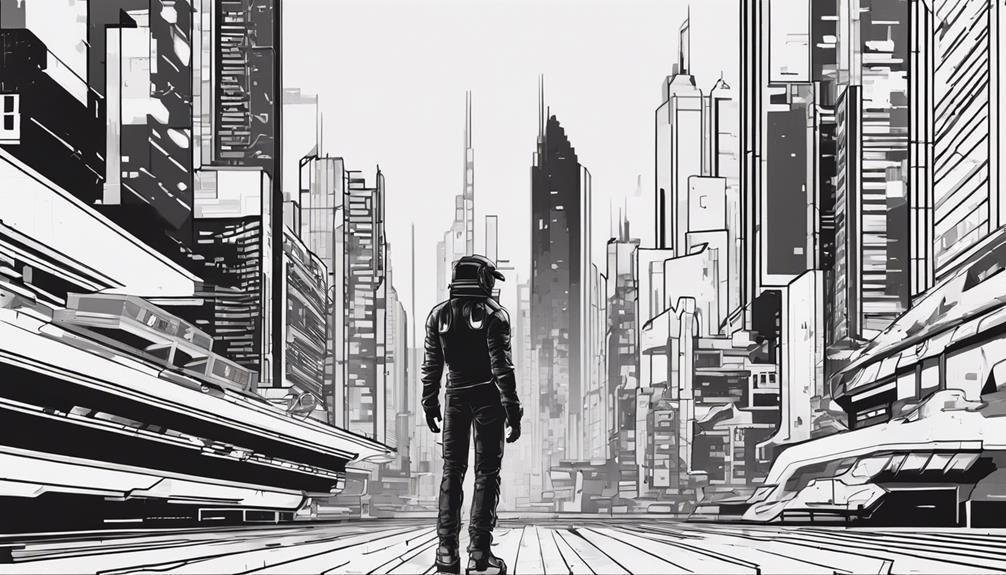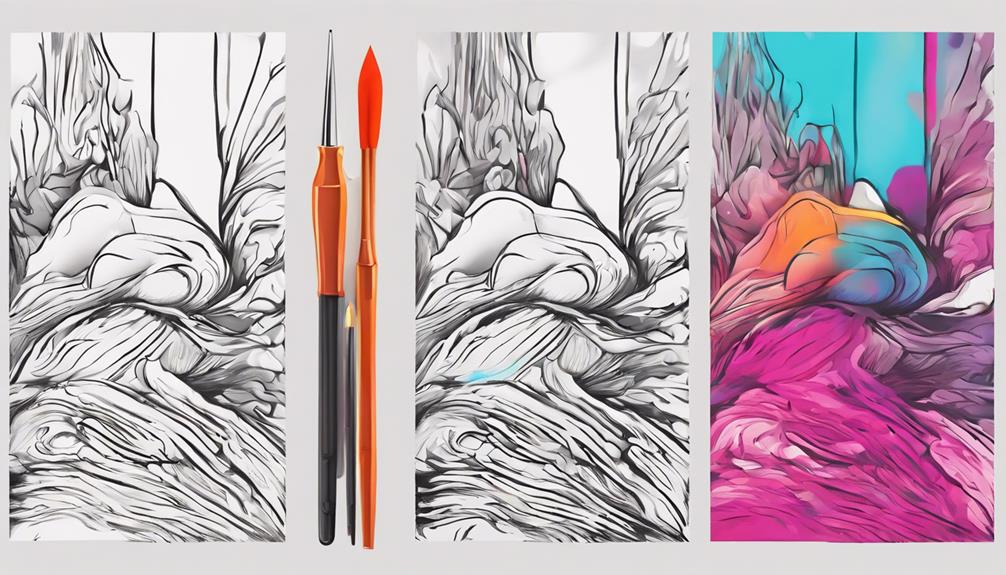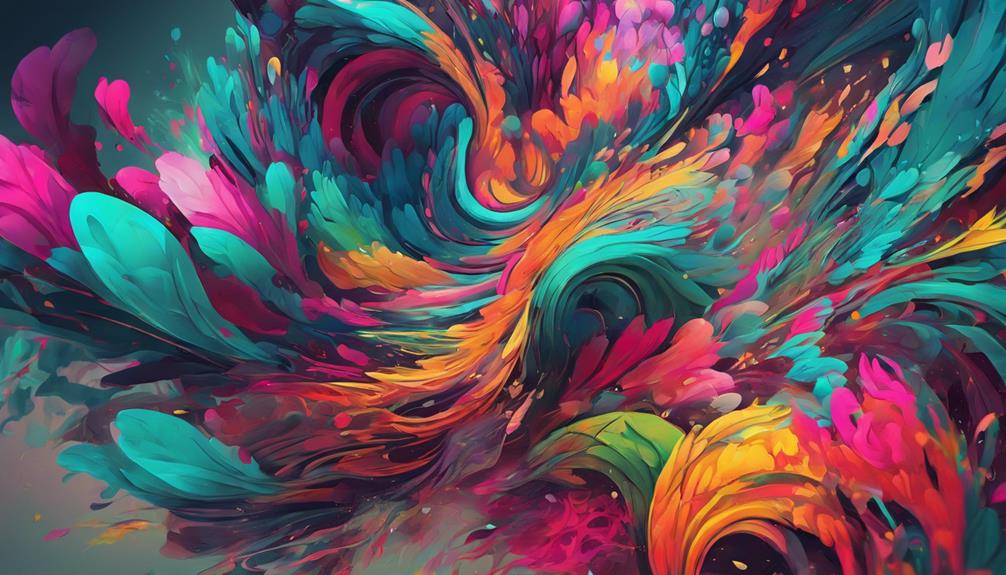Digital art, a realm where pixels and creativity converge, has sparked debates among art enthusiasts and scholars alike. The question of what truly constitutes digital art lingers, prompting a deeper exploration into its essence and boundaries. As technology continues to advance and redefine artistic possibilities, understanding the nuances of digital art becomes increasingly crucial. How does one distinguish between digital art and its traditional counterparts? What unique qualities does digital art possess that set it apart in the realm of artistic expression? The answers lie in dissecting the very fabric of digital art itself.
Key Takeaways
- Digital art encompasses various forms like digital paintings, animations, and 3D imagery.
- Technological advancements have revolutionized artistic creation through digital tools and software.
- Digital art offers innovative expressions through the use of Artificial Intelligence in the creative process.
- Artists can experiment with different mediums and techniques to create captivating and impactful digital artworks.
Definition of Digital Art

Digital art, commonly referred to as computer art or new media art, encompasses the creation of artistic works through the utilization of digital technology, such as computers, software, and electronic devices. Artists in digital art leverage these tools to express their creativity, similar to traditional artists, albeit with a digital medium. Digital art spans various forms, including digital paintings, illustrations, animations, and computer-generated visual media. The core objective of digital art is to convey emotions and messages through innovative expressions using these digital mediums. While traditional artists make creative decisions based on their skills and experiences, digital artists often explore new horizons by incorporating digital technology into their creative processes. The influence of Artificial Intelligence has also been notable in digital art, with the rise of generative adversarial networks enabling artists to collaborate with AI algorithms to produce unique and intriguing artworks. This amalgamation of human creativity with digital tools marks a significant evolution in the realm of artistic expression.
Evolution of Digital Art
With the advent of technological advancements over the past decades, the landscape of artistic creation has undergone a profound transformation, paving the way for the evolution of digital art. Pioneers like Frieder Nake and Allan Kaprow in the 1960s played pivotal roles in shaping the early stages of digital art, exploring computer graphics and pushing the boundaries of artistic expression. The 1990s witnessed a surge in digital art, with artists like Nam June Paik envisioning boundaryless communication through interactive digital artworks. This period also saw the emergence of 3D imagery and AI-generated art, expanding the creative possibilities for artists beyond traditional art forms. The interactive nature of digital art gained popularity in the late 20th century, revolutionizing the art world and engaging audiences in new and immersive ways. These advancements laid the foundation for modern digital art practices, setting the stage for a dynamic and ever-evolving field of artistic creation.
Types of Digital Art

The exploration of various forms of digital art opens a window into the diverse and innovative ways artists harness technology to create visually compelling and interactive experiences. Digital art encompasses a wide array of mediums, including digital paintings, computer-generated visual media, 3D imagery, algorithmic art, CGI, and more. Artists leverage digital tools to push the boundaries of creativity, enabling them to produce unique and captivating works of art.
Within the realm of digital art, techniques span from 2D and 3D graphics to intricate fractal art and computer-generated animations. Sophisticated software such as Maya empowers artists to design complex 3D imagery and collaborate on animated projects seamlessly. Moreover, digital art extends beyond traditional forms to encompass computer demos, digital installation art, internet art, and innovative blockchain-associated art forms. This versatility allows artists to experiment with different mediums and deliver captivating art experiences in various contexts.
Tools and Techniques
Utilizing a range of specialized tools and techniques is essential for artists to effectively create intricate and visually captivating digital artworks. In the realm of digital art, artists rely on a combination of hardware and software to bring their creative visions to life. Here are some key tools and techniques commonly employed in the digital art process:
- Drawing Tablets and Styluses: These tools allow artists to draw directly onto a digital surface with precision and sensitivity, mimicking traditional drawing and painting techniques.
- Graphic Design Software and 3D Modeling Programs: Software such as Adobe Photoshop and Blender offer a wide range of features for creating and manipulating digital art, from 2D illustrations to complex 3D models.
- Custom Brushes, Layers, and Blending Modes: Artists use custom brushes to add texture and depth to their artwork, while layers and blending modes enable them to experiment with different effects and compositions, enhancing the overall visual impact of their digital creations.
Digital Art Vs Traditional Art

In comparing digital art to traditional art, a distinct shift in artistic conventions and practices becomes evident. Digital art offers artists convenience and flexibility with features like easy undo options, a stark contrast to the permanence of traditional art. While traditional art emphasizes tangible originals, digital art prioritizes accessibility and easy corrections through technology. Digital art allows for a seamless blend of various techniques such as drawing, painting, and sculpting, leveraging the benefits of both mediums. However, creating digital art requires proficiency in software tools and digital mediums, a skill set not typically associated with traditional art. Many artists today are embracing both digital and traditional art forms, blending them to explore diverse creative expressions. This blending of mediums showcases the adaptability and creativity of artists in utilizing technology while still honoring traditional artistic practices.
| Aspect | Digital Art |
|---|---|
| Flexibility | Offers easy undo options and allows for corrections without altering the original creation. |
| Originality | Focuses on accessibility and the ease of reproducing and sharing artwork digitally. |
| Technology | Requires proficiency in software tools and digital mediums for creation. |
| Blend of Mediums | Allows for the integration of various techniques like drawing, painting, and sculpting. |
| Artist Preference | Many artists combine digital and traditional art, leveraging both for diverse creativity. |
Frequently Asked Questions
What Is the Meaning of Digital Art?
The meaning of digital art resides in its fusion of the creative process with technological advancements to deliver innovative techniques in visual storytelling, graphic design, and virtual reality. Artists harness digital manipulation to realize conceptual ideas through interactive installations, exploring new horizons in artistic expression. Online platforms further amplify the reach and impact of digital art, shaping a dynamic landscape where traditional boundaries are transcended in the pursuit of artistic excellence.
How Do You Do Digital Art?
To engage in digital art, one must utilize digital tools like drawing tablets, animation software, and photo editing programs. The creative process involves understanding graphic design principles, color theory, brush settings, and layer management. Artists manipulate these tools to create digital paintings, illustrations, or animations. Mastery in digital art is achieved through practice, experimentation with different techniques, and a deep understanding of the capabilities of various software and hardware components.
Is Digital Art a Real Art?
Digital art, with its unique creative process, artistic expression, and technical skills, undeniably holds a place as a real art form. Its visual impact, cultural relevance, and emotional connection to audiences affirm its standing in the art world. Through innovation in utilizing digital tools, digital art contributes to contemporary art trends and carries significant artistic value. Its legitimacy is recognized by institutions and collectors globally, cementing its position as a respected and influential art genre.
Why Is Digital Art Important?
Digital art is important due to its transformative impact on creative expression and technological innovation. It enables global accessibility, fosters visual storytelling, and offers interactive experiences. Moreover, digital art plays a pivotal role in cultural representation, opens up economic opportunities, provides educational benefits, facilitates collaboration opportunities, and supports career growth. Its significance lies in shaping modern artistic practices and reflecting the evolving landscape of digital technologies.
Conclusion
In conclusion, digital art has revolutionized the artistic landscape, offering a diverse range of mediums and techniques for creative expression. The evolution of digital art has provided artists with innovative tools and opportunities to push the boundaries of traditional art forms. As technology continues to advance, the possibilities for digital art are endless, challenging artists to explore new ways of creating and communicating through their work. The future of digital art holds exciting potential for further innovation and creativity.
